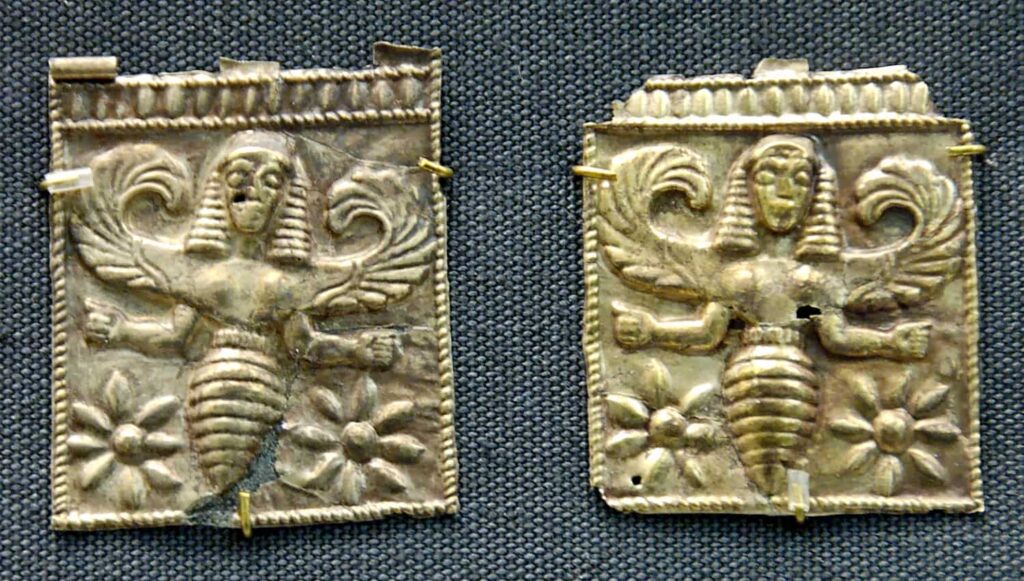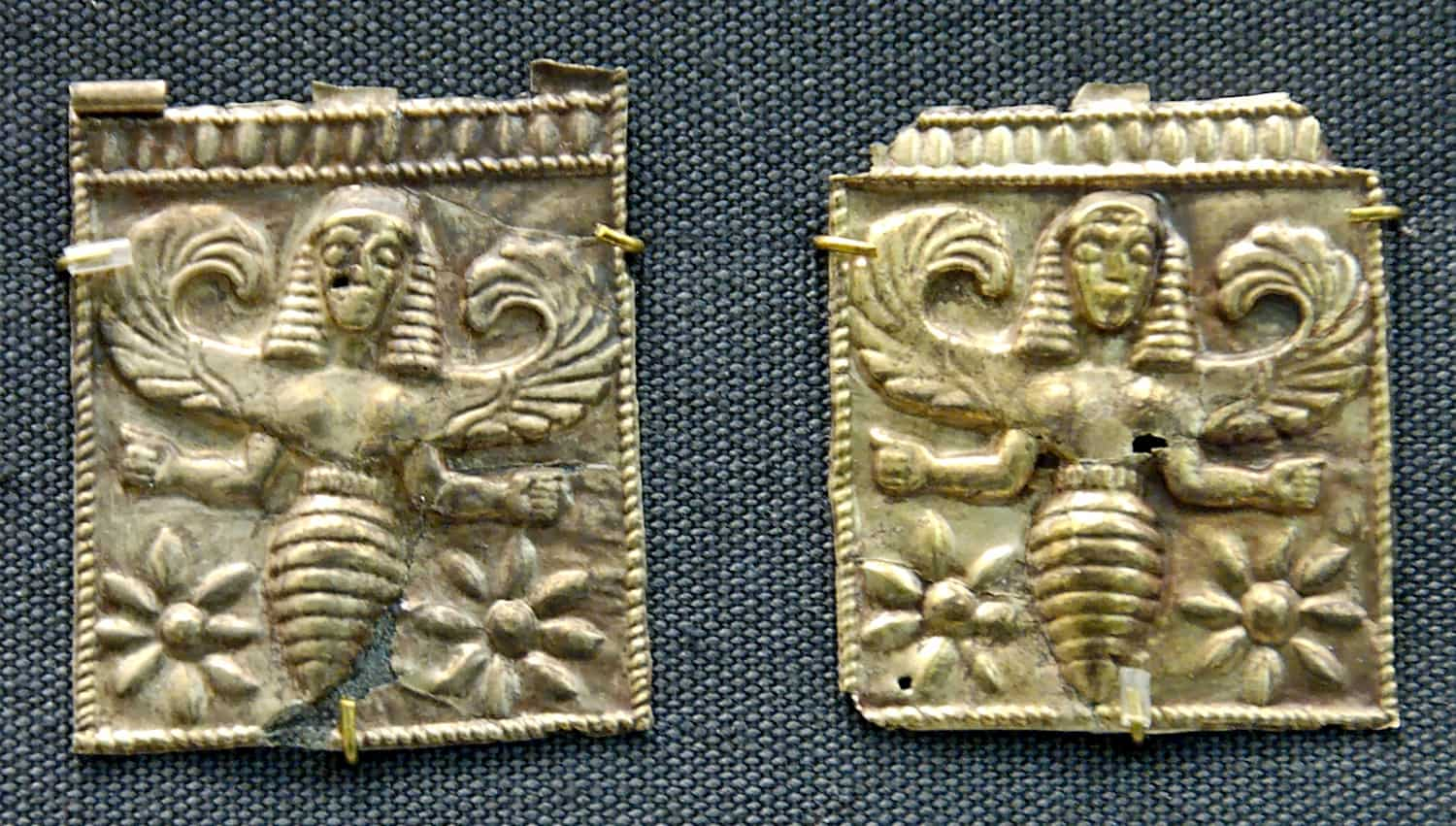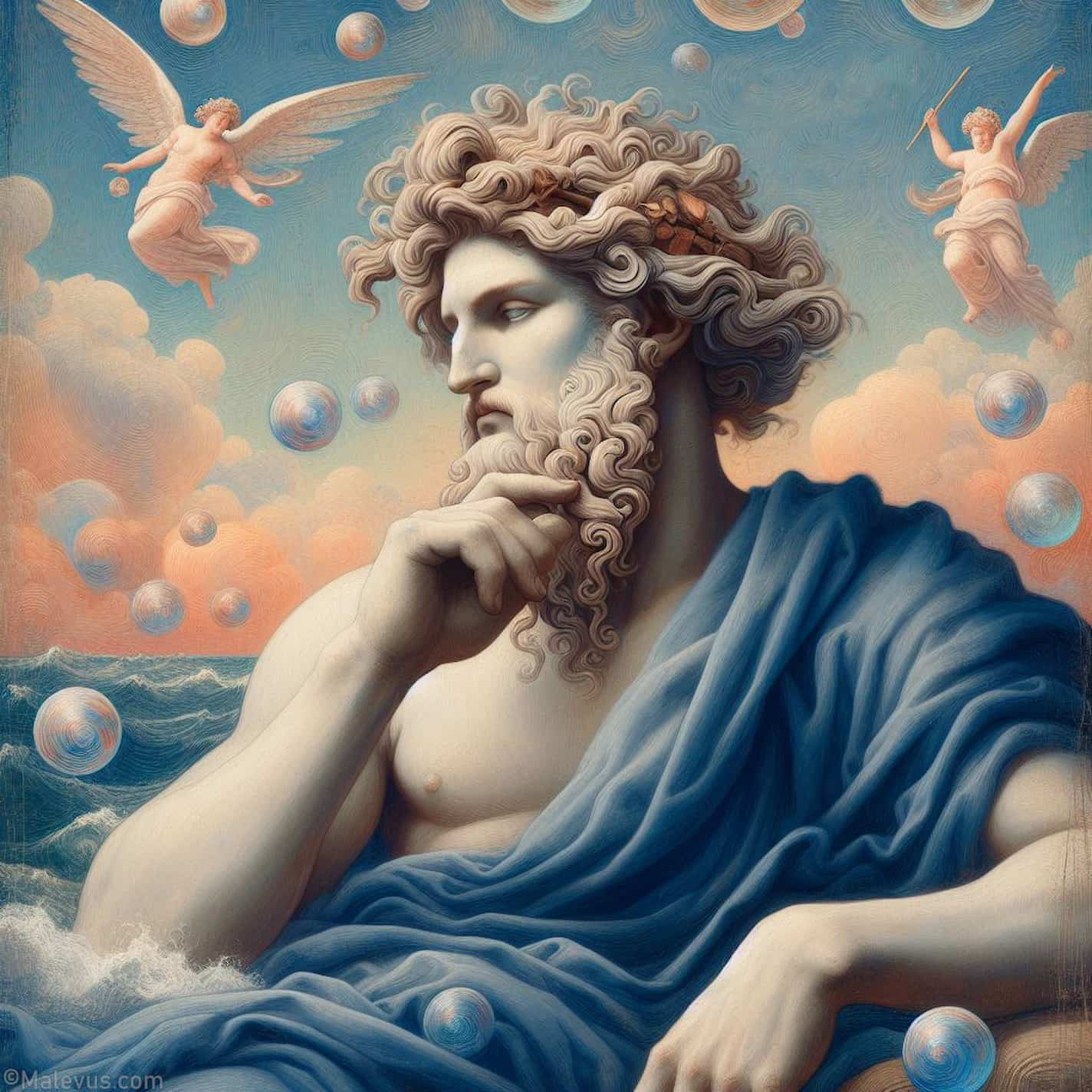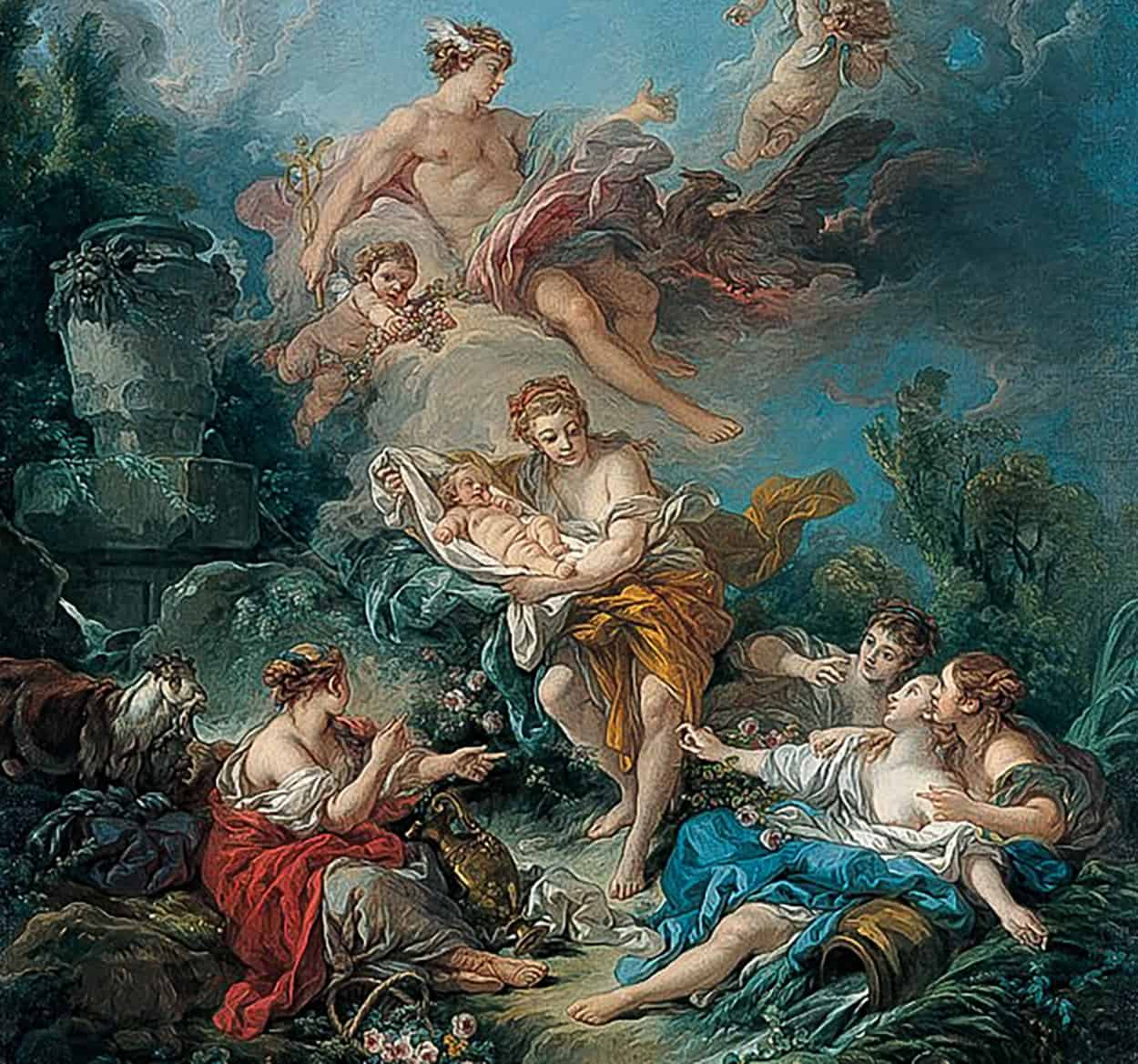With the Thriai or Thriae (Ancient Greek, literally ‘they three, feminine plural’), a triad of nymphs was referred to in Greek mythology. They had the ability to look into the future and interpret the signs of nature and omens. Later, they bestowed this gift upon Apollo by teaching it to him, and he passed it on to Hermes. They were named Melaina (“the Black”), Kleodora (“Famous for her gift”), and Daphnis (“Laurel”).
Functions
Bees and the honey they produce have often been linked to the sacred and religion. As animals, they carry the divine word and will. Here, the three sisters, nymphs and bee-women, are endowed with the gift of divination and serve the god Hermes, to whom they were given by Apollo, the god of oracles and prophecies.
They are the ones who invented the art of prophecy with small stones (θριαί / thriaí) thrown into an urn. The art of divination with stones was practiced in the sanctuary of Apollo at Delphi, among other places. The Thriambos, a song or dance from the cult of Dionysus, is etymologically traced back to the Thriae.
In Texts
Hymn to Hermes
The Thriae appear in the Homeric Hymns, specifically in the Hymn to Hermes. After the young Hermes stole Apollo’s cows and was forced to return them, the two sympathized and exchanged gifts. Hermes gives Apollo the lyre he just created (thus the domain of music and poetry), and Apollo, charmed by his young brother, offers him a golden staff (the caduceus of Hermes), the herds (the domain of shepherds), and the Thriae, bee-women endowed with divinatory gifts.
Here is the translation that Leconte de Lisle made in 1868:
“There are three Fates, virgins and sisters, who rejoice in their swift wings. With heads covered in white flour, they dwell in a valley of Parnassus; and they taught me the divinatory science to which I aspired, still a child, in the midst of my oxen, and my father did not worry about it. Since then, in that place, flying here and there, they eat honeycombs and accomplish everything. Then, having eaten the green honey, they become furious and ardently desire to speak the truth; but when deprived of the sweet food of the Gods, they try to lead astray. I give them to you, interrogate them carefully and charm your mind thus; and if some mortal known to you encounters you, he may believe in your oracle. Take them, son of Maia, along with the wild oxen with flexible feet.”
Callimachus of Cyrene
The Greek poet Callimachus mentions the Thriae several times in his work. For instance, in the Hecale (Fragment 260), he writes:
“The Thriae have inspired the old raven [or a bird, or an old visionary].”
Callimachus also alludes to the Thriae in his Hymn to Apollo (line 250).
Representations

The Thriae were apparently envisioned as nymphs with women’s heads and bee bodies. An ancient relief from the Museum of Fine Arts in Boston depicting a goddess with the head of a woman and the body of a bee could be a representation of the Thriae.
Some studies suggest that the famous “dancers’ column” in Delphi, an acanthus column adorned at its top with three young girls placed between the legs of a bronze tripod, might have been a representation of the Thriae.
Modern Evocation
In her work “Le Feuilleton d’Hermès,” the author Murielle Szac reinterprets the myth of the Thriae by naming them (Antalia, Pausania, and Rosana) and giving them distinct roles: Antalia learns to see the Invisible, Pausania teaches the past, and Rosana learns to see the future.
In the tabletop role-playing game Pathfinder, the Thriae appear as a playable species of humanoid bees, with queens being divine oracles.
Origin and Location
The Homeric Hymns to Hermes localize the Thriai on Mount Parnassus, where they taught the art of divination to the young Apollo. In this hymn, Apollo turns to Hermes and says:
“There are three holy ones, born sisters – three virgins endowed with wings: their heads are powdered with white barley meal, and they dwell under an overhang of Parnassus. They are, in themselves, teachers of divination, separate from me, the art that I learned when I was still a boy tending the herds, although my father paid no attention to it. From their dwelling place, they fly out, now here, now there, feeding on honeycombs and accomplishing all things. And when they are inspired by consuming yellow honey, they are ready to speak the truth; but if the divine sweet food is denied to them, then they speak falsely, swarming in and out together. So I give them to you; consult them carefully and delight your heart: and if any mortal known to you learns to do this, he will often hear your answer – if he is in good fortune. Accept these from me, Son of Maia…” Thus he spoke. And from the heavens, Father Zeus himself confirmed his words, and commanded that the renowned Hermes would be lord of all birds of omen… and also that he alone would be the appointed messenger to Hades, who, though he accepts no gift, would yield him no mean prize.”
—Homeric Hymn IV, to Hermes, lines 550-563, Hugh G. Evelyn-White, trans., 1914.
“In one word, they are ‘Melissae’, honey-priestesses, inspired by an entheogen, a honey drink; they are bees with heads full of white pollen,” according to Jane Harrison.
A fragment of Philochorus quoted by Zenobius makes them the educators of Apollo, to which Harrison remarks: “Outside this mention, we have never heard that Apollo had educators; he was entirely the son of his father. Would it not be more likely that they were educators of Dionysus?” and she adds a note from the Suda “they call the madness of poets thriasis.” Based on a questionable etymological association, William Smith claimed that the Thriae “were supposed to have invented the art of prophecy by means of small stones (thriai), which were thrown into an urn” (Smith 1870), and that claim is often repeated, although Philochorus asserts that the pebbles were named after the three Thriae, rather than the other way around. The earliest mention of the Thriae in a fragment of Pherecydes only states that they were three in number, hence their name. Susan Scheinman believes that the bee nymphs of the Thriai should be dissociated “due to the lack of any reference in the Hymn to the main attribute of the Thriae, their magical stones.”
The Thriai in the Homeric Hymn may coincide with the Corycides, nymphs of the prophetic springs of Mount Parnassus, thus being associated with the “daughters” of Apollo.
The golden plaques from Rhodes depicting bee goddesses are not unique. A relief in the Museum of Fine Arts, Boston, also portrays a goddess with the head of a woman and the body of a bee.






